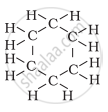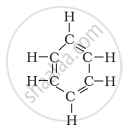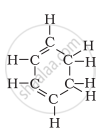Advertisements
Online Mock Tests
Chapters
2: Acids, Bases and Salts
3: Metals and Non-metals
▶ 4: Carbon and its Compounds
5: Periodic Classification of Elements
6: Life Processes
7: Control and Coordination
8: How do Organisms Reproduce?
9: Heredity and Evolution
10: Light – Reflection and Refraction
11: The Human Eye and the Colourful World
12: Electricity
13: Magnetic Effects of Electric Current
14: Sources of Energy
15: Our Environment
16: Management of Natural Resources
![NCERT Exemplar solutions for Science [English] Class 10 chapter 4 - Carbon and its Compounds NCERT Exemplar solutions for Science [English] Class 10 chapter 4 - Carbon and its Compounds - Shaalaa.com](/images/science-english-class-10_6:5f2b1b2038084cf381bfa42c826a928c.jpg)
Advertisements
Solutions for Chapter 4: Carbon and its Compounds
Below listed, you can find solutions for Chapter 4 of CBSE NCERT Exemplar for Science [English] Class 10.
NCERT Exemplar solutions for Science [English] Class 10 4 Carbon and its Compounds Multiple Choice Questions [Pages 28 - 33]
Carbon exists in the atmosphere in the form of
carbon monoxide only
carbon monoxide in traces and carbon dioxide
carbon dioxide only
coal
Which of the following statements are usually correct for carbon compounds? These
- are good conductors of electricity
- are poor conductors of electricity
- have strong forces of attraction between their molecules
- do not have strong forces of attraction between their molecules
(i) and (iii)
(ii) and (iii)
(i) and (iv)
(ii) and (iv)
A molecule of ammonia (NH3) has
only single bonds
only double bonds
only triple bonds
two double bonds and one single bond
Buckminsterfullerene is an allotropic form of
phosphorus
sulphur
carbon
tin
Which of the following are correct structural isomers of butane?
- \[\begin{array}{cc}
\ce{H}\phantom{...}\ce{H}\phantom{...}\ce{H}\phantom{...}\ce{H}\\
|\phantom{....}|\phantom{....}|\phantom{....}|\\
\ce{H - C - C - C - C - H}\\
|\phantom{....}|\phantom{....}|\phantom{....}|\\
\ce{H}\phantom{...}\ce{H}\phantom{...}\ce{H}\phantom{...}\ce{H}\\
\end{array}\] - \[\begin{array}{cc}
\ce{H}\phantom{...}\ce{H}\phantom{...}\ce{H}\\
|\phantom{....}|\phantom{....}|\\
\ce{H - C - C - C - H}\\
|\phantom{.....}|\phantom{.....}|\\
\ce{H}\ce{H-C-H}\ce{H}\\
|\\
\ce{H}\\
\end{array}\] - \[\begin{array}{cc}
\ce{H}\phantom{...}\ce{H}\phantom{...}\ce{H}\\
|\phantom{....}|\phantom{....}|\\
\ce{H - C - C - C - H}\\
|\phantom{.....}\backslash\phantom{..}|\\
\phantom{....}\ce{H}\phantom{......}\ce{C - H}\phantom{}\\
\phantom{.......}|\\
\phantom{.......}\ce{H}\\
\end{array}\] - \[\begin{array}{cc}
\ce{H}\phantom{...}\ce{H}\\
|\phantom{....}|\\
\ce{H - C - C - H}\\
|\phantom{....}|\\
\ce{H - C - C - H}\\
|\phantom{....}|\\
\ce{H}\phantom{...}\ce{H}\\
\end{array}\]
(i) and (iii)
(ii) and (iv)
(i) and (ii)
(iii) and (iv)
`"CH"_3 - "CH"_2 - "OH" overset("Alkaline""KMnO"_4 + "Heat")(->) "CH"_3 - "COOH"`
In the above given reaction, alkaline KMnO4 acts as
reducing agent
oxidising agent
catalyst
dehydrating agent
Oils on treating with hydrogen in the presence of palladium or nickel catalyst form fats. This is an example of
Addition reaction
Substitution reaction
Displacement reaction
Oxidation reaction
In which of the following compounds, — OH is the functional group?
Butanone
Butanol
Butanoic acid
Butanal
The soap molecule has a
hydrophilic head and a hydrophobic tail
hydrophobic head and a hydrophilic tail
hydrophobic head and a hydrophobic tail
hydrophilic head and a hydrophilic tail
Which of the following is the correct representation of electron dot structure of nitrogen?
Structural formula of ethyne is
`"H" - "C" ≡ "C "- "H"`
`"H"_3-"C" ≡ "C" - "H"`


Identify the unsaturated compounds from the following
- Propane
- Propene
- Propyne
- Chloropropane
(i) and (ii)
(ii) and (iv)
(iii) and (iv)
(ii) and (iii)
Chlorine reacts with saturated hydrocarbons at room temperature in the
absence of sunlight
presence of sunlight
presence of water
presence of hydrochloric acid
In the soap micelles
the ionic end of soap is on the surface of the cluster while the carbon chain is in the interior of the cluster.
ionic end of soap is in the interior of the cluster and the carbon chain is out of the cluster.
both ionic end and carbon chain are in the interior of the cluster
both ionic end and carbon chain are on the exterior of the Cluster
Pentane has the molecular formula C5 H12 It has
5 covalent bonds
12 covalent bonds
16 covalent bonds
17 covalent bonds
Structural formula of benzene is
Ethanol reacts with sodium and forms two products. These are
sodium ethanoate and hydrogen
sodium ethanoate and oxygen
sodium ethoxide and hydrogen
sodium ethoxide and oxygen
The correct structural formula of butanoic acid is
\[\begin{array}{cc}\phantom{..}\text{H} \phantom{...}\text{H}\phantom{....}\text{H}\phantom{..}\text{O}\phantom{..}\\
\phantom{...}|\phantom{....}|\phantom{....}|\phantom{...}||\phantom{...}\\
\text{H} - \text{C} - \text{C} = \text{C} - \text{C} - \text{H}\\
|\phantom{.............}\\
\text{H}\phantom{.............}
\end{array}\]\[\begin{array}{cc}
\text{H}\phantom{.....}\text{H}\phantom{.....}\text{H}\phantom{....}\text{O}\\
|\phantom{....}|\phantom{....}|\phantom{....}||\\
\text{H} - \text{C} - \text{C} - \text{C} - \text{C} - \text{C} - \text{OH}\\
|\phantom{....}|\phantom{....}|\phantom{..........}\\
\phantom{....}\text{H} \phantom{...}\text{H}\phantom{...}\text{H}\phantom{...}
\end{array}\]\[\begin{array}{cc}
\phantom{...}\text{H}\phantom{...}\text{H}\phantom{...}\text{H}\phantom{...}\text{H}\phantom{....}\\
\phantom{...}|\phantom{....}|\phantom{....}|\phantom{....}|\phantom{....}\\
\text{H} - \text{C} - \text{C} - \text{C} - \text{C} - \text{OH}\\
\phantom{....}|\phantom{....}|\phantom{....}|\phantom{....}|\phantom{....}\\
\phantom{....}\text{H}\phantom{....} \text{H}\phantom{....}\text{H} \phantom{....}\text{H}\phantom{....}
\end{array}\]\[\begin{array}{cc}
\phantom{....}\text{H}\phantom{....}\text{H}\phantom{....}\text{H}\phantom{...}\text{O}\phantom{...}\\
\phantom{......}|\phantom{....}|\phantom{....}|\phantom{....}||\phantom{......}\\
\text{H} - \text{C} - \text{C} - \text{C} - \text{C} - \text{OH}\\
\phantom{........}|\phantom{....}|\phantom{....}|\phantom{..............}\\
\phantom{........}\text{H} \phantom{...}\text{H}\phantom{...}\text{H}\phantom{.............}
\end{array}\]
Vinegar is a solution of
50% – 60% acetic acid in alcohol
5% – 8% acetic acid in alcohol
5% – 8% acetic acid in water
50% – 60% acetic acid in water
Mineral acids are stronger acids than carboxylic acids because
- mineral acids are completely ionised
- carboxylic acids are completely ionised
- mineral acids are partially ionised
- carboxylic acids are partially ionised
(i) and (iv)
(ii) and (iii)
(i) and (ii)
(iii) and (iv)
Carbon forms four covalent bonds by sharing its four valence electrons with four univalent atoms, e.g. hydrogen. After the formation of four bonds, carbon attains the electronic configuration of
helium
neon
argon
krypton
The correct electron dot structure of a water molecule is
Which of the following is not a straight chain hydrocarbon?
\[\begin{array}{cc}
\ce{H3C - CH2 - CH2 - CH2 - CH2}\\
\phantom{.........................}|\\
\phantom{............................}\ce{CH3}
\end{array}\]\[\ce{H3C - CH2 - CH3 - CH2 - CH3}\]
\[\begin{array}{cc}
\ce{CH3}\phantom{................}\\
|\phantom{..................}\\
\ce{H2C - H2C - H2C - CH2}\\
\phantom{...................}|\\
\phantom{.....................}\ce{CH3}
\end{array}\]\[\begin{array}{cc}
\ce{CH3}\phantom{.............................}\\
\backslash\phantom{.........................}\\
\ce{CH - CH2 - CH2 - CH3}\\
/\phantom{.........................}\\
\ce{H3C}\phantom{.............................}\\
\end{array}\]
Which among the following are unsaturated hydrocarbons?
- \[\ce{H3C - CH2 - CH2 - CH3}\]
- \[\ce{H3C - C ≡ C - CH3}\]
- \[\begin{array}{cc}
\ce{H3C - CH - CH3}\\
|\phantom{..}\\
\ce{CH3}\\
\end{array}\] - \[\begin{array}{cc}
\ce{H3C - C = CH2}\\
|\\
\phantom{...}\ce{CH3}\\
\end{array}\]
(i) and (iii)
(ii) and (iii)
(ii) and (iv)
(iii) and (iv)
Which of the following does not belong to the same homologous series?
CH4
C2 H6
C3 H8
C4 H8
The name of the compound CH3 — CH2 — CHO is
Propanal
Propanone
Ethanol
Ethanal
The heteroatoms present in
CH3 — CH2 — O — CH2— CH2 Cl are
- oxygen
- carbon
- hydrogen
- chlorine
(i) and (ii)
(ii) and (iii)
(iii) and (iv)
(i) and (iv)
Which of the following represents saponification reaction?
`"CH"_3"COONa" + "NaOH"overset("CaO")(->) "CH"_4 + "Na"_2"CO"_3`
`"CH"_3"COOH" + "C"_2"H"_5"OH" overset("H"_2"SO"_4)(->)"CH"_3"COOC"_2"H"_5 + "H"_2"O"`
2CH3COOH + 2Na → 2CH3 COONa + H2
CH3COOC2H5 + NaOH → CH3 COONa + C2 H5OH
The first member of alkyne homologous series is
ethyne
ethene
propyne
methane
NCERT Exemplar solutions for Science [English] Class 10 4 Carbon and its Compounds Short Answer Questions [Pages 33 - 36]
Draw the electron dot structure of ethyne and also draw its structural formula
Write the name of the following compound
\[\begin{array}{cc}
\phantom{....}\ce{H}\phantom{...}\ce{H}\phantom{...}\ce{H}\phantom{...}\ce{H}\phantom{...}\ce{O}\phantom{......}\\
\phantom{....}|\phantom{....}|\phantom{....}|\phantom{....}|\phantom{....}||\phantom{......}\\
\ce{H} - \ce{C} - \ce{C} - \ce{C} - \ce{C} - \ce{C} - \ce{OH}\\
\phantom{}|\phantom{....}|\phantom{....}|\phantom{....}|\phantom{.......}\\
\phantom{}\ce{H}\phantom{...}\ce{H}\phantom{...}\ce{H}\phantom{...}\ce{H}\phantom{.......}\\
\end{array}\]
Write the name of the following compound
\[\begin{array}{cc}
\phantom{}\ce{H}\phantom{...}\ce{H}\phantom{...}\ce{H}\phantom{.....}\\
\phantom{}|\phantom{....}|\phantom{....}|\phantom{.....}\\
\ce{H} - \ce{C} - \ce{C} - \ce{C} ≡ \ce{C} - \ce{H}\\
\phantom{}|\phantom{....}|\phantom{..........}\\
\phantom{}\ce{H}\phantom{...}\ce{H}\phantom{..........}\\
\end{array}\]
Write the name of the following compound
\[\begin{array}{cc}
\phantom{}\ce{H}\phantom{...}\ce{H}\phantom{...}\ce{H}\phantom{...}\ce{H}\phantom{...}\ce{H}\phantom{...}\ce{H}\phantom{...}\ce{H}\phantom{}\\
\phantom{}|\phantom{....}|\phantom{....}|\phantom{....}|\phantom{....}|\phantom{....}|\phantom{....}|\phantom{}\\
\ce{H - C - C - C - C - C - C - C = O}\\
\phantom{}|\phantom{....}|\phantom{....}|\phantom{....}|\phantom{....}|\phantom{....}|\phantom{.....}\\
\phantom{.}\ce{H}\phantom{...}\ce{H}\phantom{...}\ce{H}\phantom{...}\ce{H}\phantom{...}\ce{H}\phantom{...}\ce{H}\phantom{......}
\end{array}\]
Write the name of the following compound
\[\begin{array}{cc}
\phantom{}\ce{H}\phantom{...}\ce{H}\phantom{...}\ce{H}\phantom{...}\ce{H}\phantom{...}\ce{H}\phantom{..}\\
\phantom{}|\phantom{....}|\phantom{....}|\phantom{....}|\phantom{....}|\phantom{..}\\
\ce{H - C - C - C - C - C - OH}\\
\phantom{}|\phantom{....}|\phantom{....}|\phantom{....}|\phantom{....}|\phantom{..}\\
\phantom{}\ce{H}\phantom{...}\ce{H}\phantom{...}\ce{H}\phantom{...}\ce{H}\phantom{...}\ce{H}\phantom{..}
\end{array}\]
Identify and name the functional groups present in the following compounds.
- \[\begin{array}{cc}
\ce{H}\phantom{...}\ce{H}\phantom{...}\ce{H}\phantom{..}\\
\phantom{}|\phantom{....}|\phantom{....}|\phantom{..}\\
\ce{H - C - C - C - OH}\\
\phantom{}|\phantom{....}|\phantom{....}|\phantom{..}\\
\ce{H}\phantom{...}\ce{H}\phantom{...}\ce{H}\phantom{..}\\
\end{array}\] - \[\begin{array}{cc}
\phantom{...}\ce{H}\phantom{...}\ce{H}\phantom{...}\ce{H}\phantom{....}\\
\phantom{...}|\phantom{....}|\phantom{....}||\phantom{....}\\
\ce{H - C - C - C - OH}\\
\phantom{...}|\phantom{....}|\phantom{.........}\\
\phantom{}\ce{H}\phantom{...}\ce{H}\phantom{.......}\\
\end{array}\] - \[\begin{array}{cc}
\phantom{......}\ce{H}\phantom{....}\ce{H}\phantom{....}\ce{O}\phantom{...}\ce{H}\phantom{...}\ce{H}\phantom{.......}\\
\phantom{....}|\phantom{....}|\phantom{....}||\phantom{....}|\phantom{....}|\phantom{....}\\
\ce{H} - \ce{C} - \ce{C} - \ce{C} - \ce{C} - \ce{C} - \ce{H}\\
\phantom{....}|\phantom{.....}|\phantom{........}|\phantom{....}|\phantom{....}\\
\phantom{....}\ce{H}\phantom{....}\ce{H}\phantom{........}\ce{H}\phantom{..}\ce{H}\phantom{.....}\\
\end{array}\] - \[\begin{array}{cc}
\phantom{......}\ce{H}\phantom{...}\ce{H}\phantom{...}\ce{H}\phantom{...}\ce{H}\phantom{......}\\
\phantom{....}|\phantom{....}|\phantom{....}|\phantom{....}|\phantom{....}\\
\ce{H - C - C - C = C - H}\\
\phantom{....}|\phantom{....}|\phantom{.............}\\
\phantom{....}\ce{H}\phantom{...}\ce{H}\phantom{.............}
\end{array}\]
A compound X is formed by the reaction of a carboxylic acid C2H4O2 and an alcohol in presence of a few drops of H2SO4. The alcohol on oxidation with alkaline KMnO4 followed by acidification gives the same carboxylic acid as used in this reaction. Give the names and structures of
- carboxylic acid
- alcohol and
- the compound X.
Also write the reaction.
Detergents are better than soaps. Justify.
Name the functional groups present in the following compounds
- CH3 CO CH2 CH2 CH2 CH3
- CH3 CH2 CH2 COOH
- CH3 CH2 CH2 CH2 CHO
- CH3 CH2 OH
How is ethene prepared from ethanol? Give the reaction involved in it.
Intake of small quantity of methanol can be lethal. Comment.
A gas is evolved when ethanol reacts with sodium. Name the gas evolved and also write the balanced chemical equation of the reaction involved.
Ethene is formed when ethanol at 443 K is heated with excess of concentrated sulphuric acid. What is the role of sulphuric acid in this reaction? Write the balanced chemical equation of this reaction.
Carbon, Group (14) element in the Periodic Table, is known to form compounds with many elements. Write an example of a compound formed with
- chlorine (Group 17 of Periodic Table)
- oxygen (Group 16 of Periodic Table)
In electron dot structure, the valence shell electrons are represented by crosses or dots.
- The atomic number of chlorine is 17. Write its electronic configuration
- Draw the electron dot structure of chlorine molecule.
Catenation is the ability of an atom to form bonds with other atoms of the same element. It is exhibited by both carbon and silicon. Compare the ability of catenation of the two elements. Give reasons.
Unsaturated hydrocarbons contain multiple bonds between the two C-atoms and show addition reactions. Give the test to distinguish ethane from ethene.
Match the reactions given in Column (A) with the names given in column (B).
| Column (A) | Column (B) | ||
(a) |
`"CH"_3"OH" + "CH"_3"COOH"overset("H"^+)(->) "CH"_3"COOCH"_3 + "H"_2"O"` | (i) | Addition reaction |
| (b) | `"CH"_3 = "CH"_2 + "H"_2 overset("Ni")(->)"CH"_3 - "CH"_3` | (ii) | Substitution reaction |
| (c) | `"CH"_4 + "Cl"_2overset("Sunlight")(->)"CH"_3"Cl" + "HCl"` | (iii) | Neutralisation reaction |
| (d) | `"CH"_3"COOH" + "NaOH" -> "CH"_3"COONa" + "H"_2"O"` | (iv) | Esterification reaction |
Write the structural formulae of all the isomers of hexane.
What is the role of metal or reagents written on arrows in the given chemical reactions?
- \[\begin{array}{cc}
\ce{CH3}\phantom{.....}\ce{CH3}\phantom{.........}\ce{CH3}\phantom{..}\ce{CH3}\phantom{..........}\\
\phantom{...}\backslash\phantom{......}/\phantom{................}|\phantom{.....}|\phantom{............}\\
\ce{C} = \ce{C} + \ce{H2} \overset{\ce{Ni}}{\rightarrow} \ce{CH3 - C - C - CH3}\\
\phantom{.}/\phantom{........}\backslash\phantom{..............}|\phantom{....}|\phantom{.........}\\
\ce{CH3}\phantom{....}\ce{CH3}\phantom{............}\ce{H}\phantom{...}\ce{H}\phantom{........}
\end{array}\] - \[\ce{CH3COOH + CH3CH2OH \overset{\ce{Conc. H2SO4}}{\rightarrow}CH3COOC2H5 + H2O}\]
- \[\ce{CH3CH2OH}\ce{->[Alk.KMnO4][Heat]CH3COOH}\]
NCERT Exemplar solutions for Science [English] Class 10 4 Carbon and its Compounds Long Answer Questions [Pages 36 - 37]
A salt X is formed and a gas is evolved when ethanoic acid reacts with sodium hydrogencarbonate. Name the salt X and the gas evolved. Describe an activity and draw the diagram of the apparatus to prove that the evolved gas is the one which you have named. Also, write chemical equation of the reaction involved.
- What are hydrocarbons? Give examples.
- Give the structural differences between saturated and unsaturated hydrocarbons with two examples each.
- What is a functional group? Give examples of four different functional groups.
Name the reaction which is commonly used in the conversion of vegetable oils to fats. Explain the reaction involved in detail.
- Write the formula and draw electron dot structure of carbon tetrachloride.
- What is saponification? Write the reaction involved in this process.
Esters are sweet-smelling substances and are used in making perfumes. Suggest some activity and the reaction involved for the preparation of an ester with well labeled diagram.
A compound C (molecular formula, C2H4O2) reacts with Na – metal to form a compound R and evolves a gas which burns with a pop sound. Compound C on treatment with an alcohol A in presence of an acid forms a sweet smelling compound S (molecular formula, C3H6O2). On addition of NaOH to C, it also gives R and water. S on treatment with NaOH solution gives back R and A. Identify C, R, A, S and write down the reactions involved.
Look at below figure and answer the following questions.

- What change would you observe in the calcium hydroxide solution taken in tube B?
- Write the reaction involved in test tubes A and B respectively.
- If ethanol is given instead of ethanoic acid, would you expect the same change?
- How can a solution of lime water be prepared in the laboratory?
How would you bring about the following conversions? Name the process and write the reaction involved.
Draw the possible isomers of the compound with molecular formula C3H6O and also give their electron dot structures.
Explain the given reactions with the examples
- Hydrogenation reaction
- Oxidation reaction
- Substitution reaction
- Saponification reaction
- Saponification reaction
An organic compound A on heating with concentrated H2SO4 forms a compound B which on addition of one mole of hydrogen in presence of Ni forms a compound C. One mole of compound C on combustion forms two moles of CO2 and 3 moles of H2O. Identify the compounds A, B and C and write the chemical equations of the reactions involved.
Solutions for 4: Carbon and its Compounds
![NCERT Exemplar solutions for Science [English] Class 10 chapter 4 - Carbon and its Compounds NCERT Exemplar solutions for Science [English] Class 10 chapter 4 - Carbon and its Compounds - Shaalaa.com](/images/science-english-class-10_6:5f2b1b2038084cf381bfa42c826a928c.jpg)
NCERT Exemplar solutions for Science [English] Class 10 chapter 4 - Carbon and its Compounds
Shaalaa.com has the CBSE Mathematics Science [English] Class 10 CBSE solutions in a manner that help students grasp basic concepts better and faster. The detailed, step-by-step solutions will help you understand the concepts better and clarify any confusion. NCERT Exemplar solutions for Mathematics Science [English] Class 10 CBSE 4 (Carbon and its Compounds) include all questions with answers and detailed explanations. This will clear students' doubts about questions and improve their application skills while preparing for board exams.
Further, we at Shaalaa.com provide such solutions so students can prepare for written exams. NCERT Exemplar textbook solutions can be a core help for self-study and provide excellent self-help guidance for students.
Concepts covered in Science [English] Class 10 chapter 4 Carbon and its Compounds are Carbon: a Versatile Element, The Covalent Bond, Saturated and Unsaturated Carbon Compounds, Chains, Branches and Rings of Carbon Compound, Homologous Series of Carbon Compound, Ethanol, Ethanoic Acid, Soap, Properties of Carbon, Nomenclature of Organic Compounds, Allotropy and Allotropes of Carbon, Crystalline Allotropes of Carbon: Diamond, Crystalline Allotropes of Carbon: Graphite, Crystalline Allotropes of Carbon: Fullerene, Functional Groups in Carbon Compounds, Detergents, Cleansing Action of Soap.
Using NCERT Exemplar Science [English] Class 10 solutions Carbon and its Compounds exercise by students is an easy way to prepare for the exams, as they involve solutions arranged chapter-wise and also page-wise. The questions involved in NCERT Exemplar Solutions are essential questions that can be asked in the final exam. Maximum CBSE Science [English] Class 10 students prefer NCERT Exemplar Textbook Solutions to score more in exams.
Get the free view of Chapter 4, Carbon and its Compounds Science [English] Class 10 additional questions for Mathematics Science [English] Class 10 CBSE, and you can use Shaalaa.com to keep it handy for your exam preparation.












